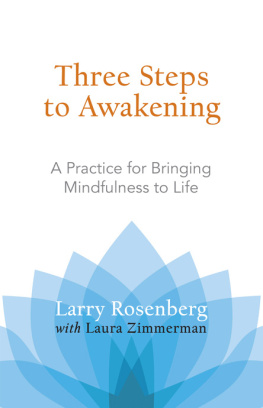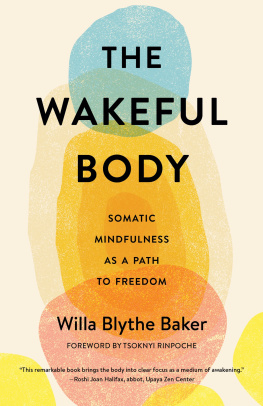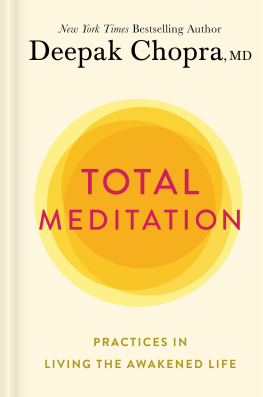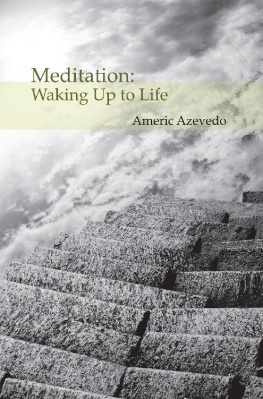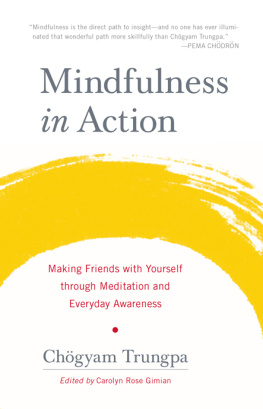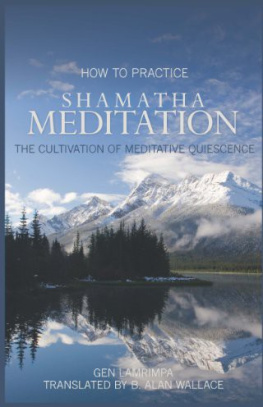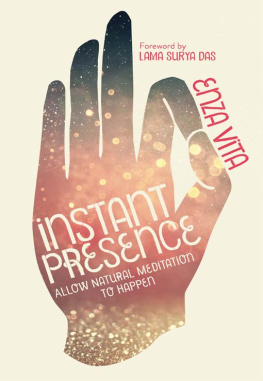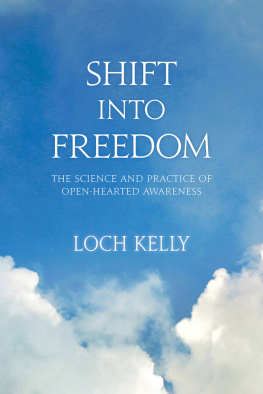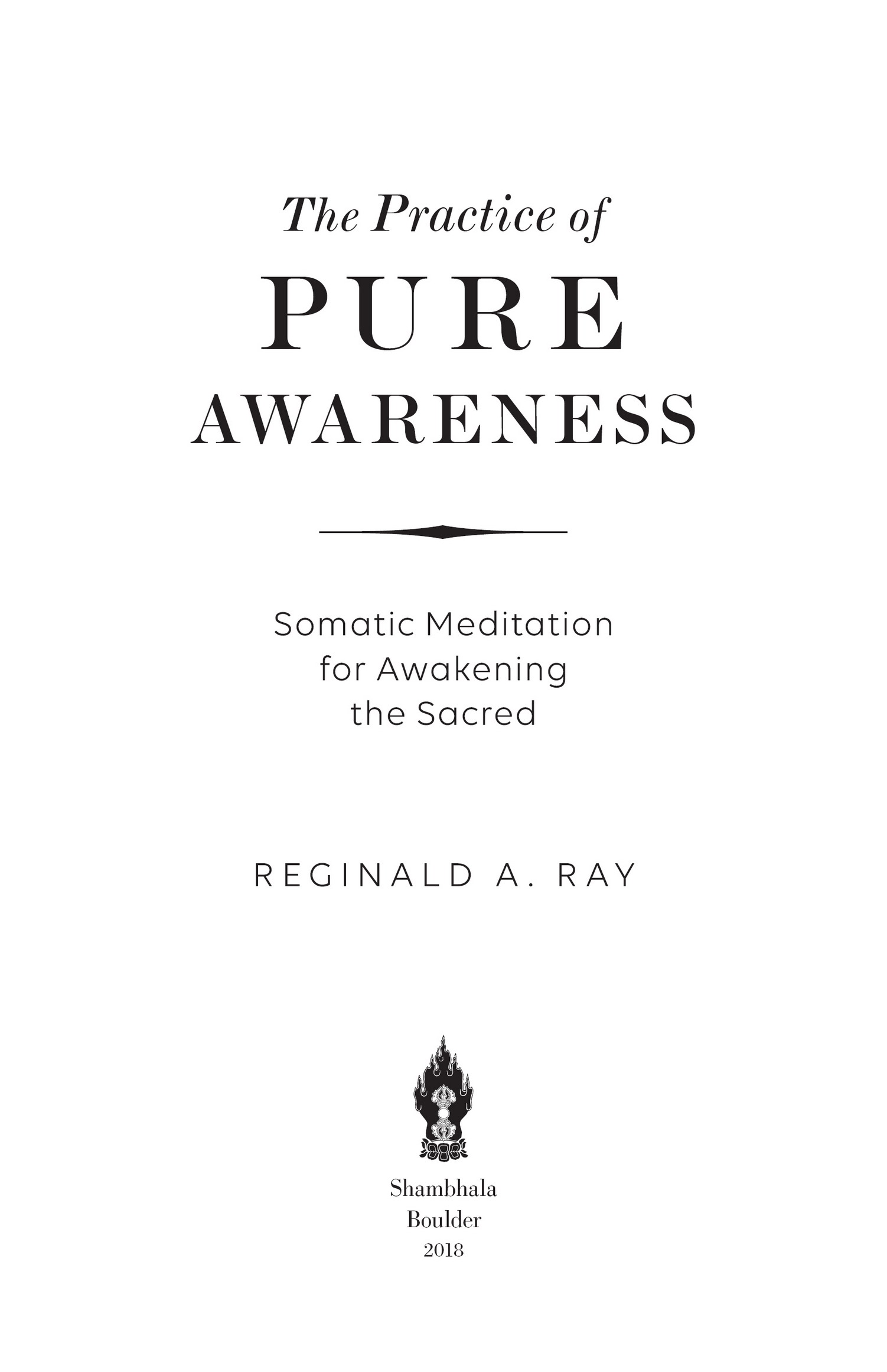Contents
BOOKS BY REGINALD A. RAY
The Awakening Body:
Somatic Meditation for Discovering Our Deepest Life
In the Presence of Masters:
Wisdom from 30 Contemporary Tibetan Buddhist Teachers
Indestructible Truth: The Living Spirituality of Tibetan Buddhism
Secret of the Vajra World: The Tantric Buddhism of Tibet
Touching Enlightenment: Finding Realization in the Body
The Wisdom of Tibetan Buddhism
Shambhala Publications, Inc.
4720 Walnut Street
Boulder, Colorado 80301
www.shambhala.com
2018 by Rolling Thunder Intellectual Property Trust
All rights reserved. No part of this book may be reproduced in any form or by any means, electronic or mechanical, including photocopying, recording, or by any information storage and retrieval system, without permission in writing from the publisher.
Ebook design adapted from printed book design by Greta D. Sibley
Library of Congress Cataloging-in-Publication Data
Names: Ray, Reginald A., author.
Title: The practice of pure awareness: somatic meditation for awakening the sacred / Reginald A. Ray.
Description: First Edition. | Boulder: Shambhala, 2018.
Identifiers: LCCN 2017050278 | ISBN 9781611803815 (pbk.: alk. paper)
eISBN9780834841611
Subjects: LCSH: MeditationTantric Buddhism.
| AwarenessReligious AspectsTantric Buddhism.
Classification: LCC BQ8938 .R338 2018 | DDC 294.3/4435dc23
LC record available at https://lccn.loc.gov/2017050278
v5.3.2
a
FOR MY CHILDREN, TARA, CATHERINE, AND DAMIAN

The great wisdom dwells in the body.
Tulku Urgyen Rinpoche, As It Is, vol. I
CONTENTS
PART ONE
The View and Somatic Practice of Pure Awareness
PART TWO
The Pernicious Ego
PART THREE
The Posture of Pure Awareness and Its Practice
PART FOUR
Cultivating the Empty Field
PART FIVE
Shila: Establishing a Container for Our Practice
PART SIX
Everyday Awakening
ACKNOWLEDGMENTS
THE PRACTICE OF PURE AWARENESS , by this or one of its many other names, has been the ultimate aim of Buddhist meditators since the time of the Buddha. Over this long history, there have been countless lineages that have developed their own unique ways of speaking of the practice and of making the journey to its beatific end. The tantric approach of Tibet is distinctive among these for its emphasis on our body, our physical being, as the most accessible and effective gate to that ultimate awakening. My own meditation training has occurred over the past fifty years primarily within the Tibetan lineages, and while I have explored the other major Buddhist contemplative traditions often to great benefit, for me the Tibetan approach has been by far the most powerful and transformative.
My own root teacher, Chgyam Trungpa, transmitted these tantric teachings to me and his other close students. There is little original in what I am writing about here; I am just trying to pass on to you the core and the essence of what I learned from him, but to do so in a way that I hope will make the most sense to you and not be too difficult to access and assimilate. Trungpa once said, As an individual, I am nothing. However, there are the teachings, and it is they that have made my life supremely meaningful. It would be ridiculous for me to compare myself in any way to him, but his words have helped me a great deal because, as the years have gone by, I find myself feeling more and more the same way. The important point, though, is that in these teachings he gave the essence of his life to me and his other early students, and in so doing he gave me my life. My highest aspiration is to pass something of that gift on to you.
There have been a few other Buddhist meditation masters whose example and teachingssometimes in person, sometimes in recordings and bookshave been deeply impactful to my understanding and practice. Although much could be said about each, I just list their names here as a way to acknowledge the immense debt I owe to them: Khenpo Gangshar Wangpo, one of Trungpas gurus; His Holiness Rangjung Rigpe Dorje, the Sixteenth Karmapa; Dilgo Khyentse Rinpoche; Khenpo Tsltrim Gyamtso; Thrangu Rinpoche; Tulku Urgyen Rinpoche; the nineteenth-century siddha vagabond Patrul Rinpoche; Master Hongzhi, a twelfth-century Chinese Chan teacher; and the Zen master Suzuki Roshi.
This book is the outcome of a community of practitioners studying and meditating together over a period of several decades. That community includes not only members of the Dharma Ocean sangha but, more expansively, all those who have listened to, explored, and provided feedback about the somatically based practices described here: students at Naropa University and the University of Colorado; people who have attended talks and workshops; those who have followed my teaching online or who have taken my various Sounds True recorded programs as their prime avenues of access; meditators, bodyworkers, healers, dancers, athletes, and practitioners of all ilks; additional folks with an interest in the body and embodied spirituality; and many others around the world.
A most important person in the recent evolution of these teachings has been my spiritual consort and partner, Caroline Pfohl. Bringing a depth of experience with Chan Buddhism, Taoism, and Chinese medicine acquired over some three decades in Asia, she has challenged me continually to see things from a different angle, to sharpen and refine my own understanding, and, most of all, to walk the talk. When she arrived in Crestone, Colorado, thirteen years ago wanting to study in this lineage, almost the first words out of her mouth were, Reggie, I sense you may not fully embody the teachings you are offering, and without that, they arent going to mean very much or help people in the way they could. In the subsequent years, as I continued my teaching work, she has consistently encouraged me not to lose sight of my own journey and to deepen my practice so that it more truly reflects what I am trying to transmit.
At this point, Caroline and I and all those who have practiced with us have pursued what has been an extraordinarily compelling journey of exploration and discovery. Everything in this book is the result, first and foremost, of course, of my own study and practice of what I learned from my principal teacher, Chgyam Trungpa Rinpoche, and my other meditation teachers. It is also the outcome of the alchemical process of practice, experience, and discussion that has been going on between Caroline and me more or less nonstop24/7, as they saysince we met. The writing of this book has been very much part of this process, with Caroline reading and rereading each new draft and detecting where I have slipped off the point or am not expressing the teaching clearly enough, often finding exactly the right word when I cant.
Finally, equally and no less importantly, this book is the result of what has come about as I have sat in the teachers seat, teaching meditation and receiving feedback about the practitioners experiences. Over the years, I have been very fortunate to have many intelligent, questioning, and courageousand sometimes outrageousstudents who have scrutinized, loved, and looked into me and what I teach each step of the way, to see what lands and proves itself in practice. And so it has been that many, many people have contributed in a direct and material way to


